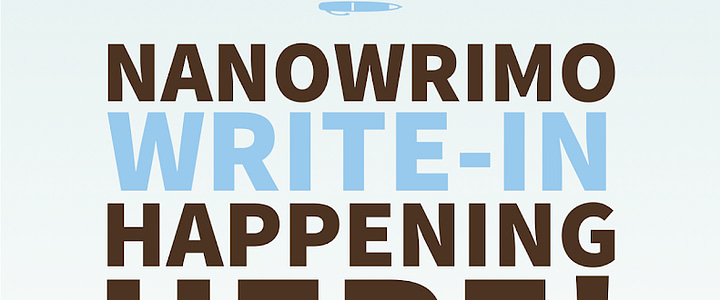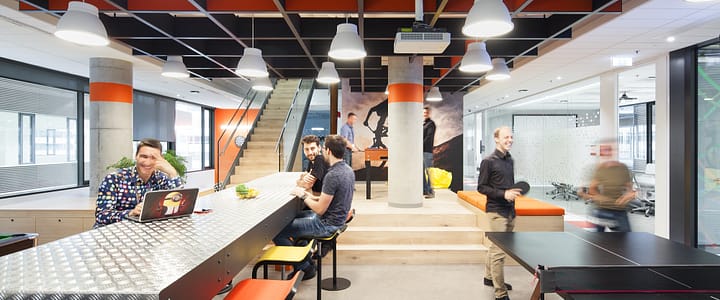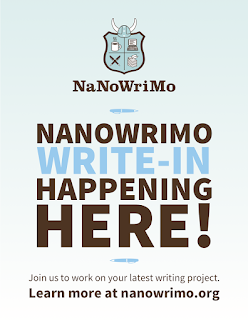
By Beth Green
“Um, why?”
That’s the question I hear most frequently about NaNoWriMo, the month-long challenge to write a novel in a month.
The implication is: Why try to write a whole novel in a month? Aren’t novels, you know, hard?


By Beth Green
“Um, why?”
That’s the question I hear most frequently about NaNoWriMo, the month-long challenge to write a novel in a month.
The implication is: Why try to write a whole novel in a month? Aren’t novels, you know, hard?

The Freelancing market makes up 35% of the global workforce, which works out to 1.1 billion workers. In Europe Freelancing has grown by 45% between 2014 and 2019. Since this career path entails a lack of a traditional office, freelancers have a choice to make regarding their work environment. However, having more possibilities can complicate the decision-making, raising the question: What are the advantages and disadvantages of different working environments? We’re going to answer this question in this article, focusing on four of the most prominent working environments: home offices, cafes, executive suites and coworking spaces.
| Home Office | Cafe | Executive Suite | Coworking Space | |
| Privacy | ✅ | ❌ | ✅ | ✅/❌ |
| Affordability | ✅ | ❌ | ❌ | ✅/❌ |
| Productive atmosphere | ❌ | ❌ | ✅ | ✅ |
| Sociability | ❌ | ✅ | ❌ | ✅ |
| Professional growth | ❌ | ❌ | ❌ | ✅ |
| Infrastructure | ❌ | ❌ | ✅ | ✅ |
| Flexibility | ✅ | ✅/❌ | ✅ | ✅ |
While every work environment we covered has its advantages and disadvantages, the good news is that unlike working from a corporate office, as a freelancer, you really don’t have to choose! You can mix it up, working from home, cafés, the library, or a nice coworking space depending on your mood or needs. If you still don’t know whether which environment is right for you, we encourage you to give a couple of spaces a try! Why not start with a coworking space? You can get a free day at Locus, no strings attached. Better still, try us out for a month and get a real sense as to whether Locus is right for you! First-time members get 1000 Kc off a Full-Time Membership for the first month. Happy working!

Here is Brad Neuberg’s original conception (this blog post represents the first public expression of the term as it is used today), which we think captures the spirit as well as any other definitions out there:
Traditionally, society forces us to choose between working at home for ourselves or working at an office for a company. If we work at a traditional 9 to 5 company job, we get community and structure, but lose freedom and the ability to control our own lives. If we work for ourselves at home, we gain independence but suffer loneliness and bad habits from not being surrounded by a work community.
Coworking is a solution to this problem. In coworking, independent writers, programmers, and creators come together in community a few days a week. Coworking provides the “office” of a traditional corporate job, but in a very unique way.
Here’s one of our favorite definitions, from Coworking.com, managed by a team of coworking space managers and owners who have been central to the coworking movement from its early days:
The idea is simple: that independent professionals and those with workplace flexibility work better together than they do alone. Coworking answers the question that so many face when working from home: “Why isn’t this as fun as I thought it would be?”
Beyond just creating better places to work, coworking spaces are built around the idea of community-building and sustainability. Coworking spaces uphold the values set forth by those who developed the concept in the first place: collaboration, community, sustainability, openness, and accessibility.
 Coworking spaces offer dynamic locations of exchange and sharing. Freelancers, entrepreneurs, and creatives from diverse fields enlarge your network, but more importantly serve as a resource of experience and knowledge and potential collaboration or inspiration. For many members, however, the most important benefit is purely the positive social energy. Members often feel more motivated surrounded by other focused, hard-working members.
Coworking spaces offer dynamic locations of exchange and sharing. Freelancers, entrepreneurs, and creatives from diverse fields enlarge your network, but more importantly serve as a resource of experience and knowledge and potential collaboration or inspiration. For many members, however, the most important benefit is purely the positive social energy. Members often feel more motivated surrounded by other focused, hard-working members. Most coworking spaces also organize events that help facilitate both the social relationships, motivation, and professional development. Locus, for example, organizes weekly coffee breaks and lunches, and monthly pub nights and game nights to facilitate meaningful social connections. For motivation, Locus hosts weekly Work Jams, where members sit together at the same table and use a timer to work together for a half day with planned breaks, and weekly critique-free writing meetups to help provide a sacred time and place, and positive social energy, for focused writing.
Coworking spaces promote sustainability as key players in the sharing economy. They allow members to dramatically reduce commute times because they are often located in the neighborhoods where their members work, and they reduce operation costs and startup time by providing great office infrastructure to members who could never justify having meeting rooms, data projectors and other high-quality office equipment in central locations if that space was not shared among many other location-independent professionals.
Many coworking spaces also serve as a kind of landing zone, helping to connect global and local. About 70% of Locus’s members, for example, come from countries other than the Czech Republic (nearly 30 different countries), with the language of the space being English. This allows newcomers to Prague a ready way to form a community with other people like them, and also with English-speaking Czechs who are welcoming to an international community and reading to share local knowledge. Czech members, who make up about 30% of Locus’s members, get the complementary benefit of ready access to a friendly international community and a workplace where they can practice their English on a daily basis.
━━━━━━━━━━━━━━━━━━━━━━━━━━━━━━━━━━━━━
━━━━━━━━━━━━━━━━━━━━━━━━━━━━━━━━━━━━━

by Beth Green
Today is Halloween, so it’s an appropriate day to ask: What are you afraid of? What specific dread creeps up on you in the dark, when you’re alone?
Many Locus members, I suspect, share one of my fears: The fear of leaving a dream unrealized.
That one project you’ve always wanted to dive into; a pool of potential that only you recognize. Whether that’s a side business you know would be a hit, a spec project that could have real damn legs if only you could take the time to tinker with it, or a creative oeuvre no one is paying for (yet) but you just know deserves to be made real.
A few months ago, Locus Workspace owner Will Bennis sent out a survey asking us about these types of projects. As he called them, “the ones that stay in your mind for years.” Exactly half of the respondents confessed that they had nurtured a project idea for years that they had not yet managed to complete.
It is for this half of the population that National Novel Writing Month (NaNoWriMo) was created. And is this group within Locus Workspace that I would like to invite to the NaNoWriMo Write-Ins that I’ll be hosting on November 4th and 25th in the big conference room. (OK, I lied. All Locus members are invited!)
In case you’re not familiar with NaNoWriMo, a quick explanation: It’s a 30-day event, held in November, in which participants challenge themselves to write the first, hilariously messy draft of a 50,000-word novel. In other words, it’s an opportunity and a blueprint for setting aside time to get one of these big projects out of your head and into the real world.
 For most NaNoWriMo participants, this is a novel, but NaNoRebels may choose to write a series of poems, or essays, or work on a thesis, or storyboard an indie film, or whatever their beautiful, messy minds come up with. In the past 15 years, I’ve personally used NaNoWriMo for momentum to edit existing drafts and do a series of travel memoir essays in addition to novel first drafts.
For most NaNoWriMo participants, this is a novel, but NaNoRebels may choose to write a series of poems, or essays, or work on a thesis, or storyboard an indie film, or whatever their beautiful, messy minds come up with. In the past 15 years, I’ve personally used NaNoWriMo for momentum to edit existing drafts and do a series of travel memoir essays in addition to novel first drafts.
Now do every one of the projects that the estimated 400,000 participants (last year’s numbers) take on turn into a masterpiece? Maybe not. But many do. NaNoWriMo projects that ended up as published novels include Water for Elephants by Sara Gruen (later a movie), The Night Circus by Erin Morgenstern, and Wool by Hugh Howey.
Much like you might join the gym to help you get ready to run a marathon, or take salsa lessons to make sure that you don’t embarrass yourself at your cousin’s wedding next year, or any other kind of small incremental goal that leads up to something more significant, NaNoWriMo encourages you to think of novel writing as something that you practice a little bit each day to work towards one giant goal.
And that’s a takeaway for all of us.
 Though the NaNoWriMo founders maintained that everyone could write a novel with just the scraps of free time that we have when waiting for the tram, for rice to boil, for the conference call to be over, most of us find it helpful during the month to set aside longer chunks of time to write.
Though the NaNoWriMo founders maintained that everyone could write a novel with just the scraps of free time that we have when waiting for the tram, for rice to boil, for the conference call to be over, most of us find it helpful during the month to set aside longer chunks of time to write.
At the write-ins on Nov. 4 and 25, we’ll have a quiet, welcoming space (and coffee and donuts! And official NaNoWriMo swag!) for anyone who wants to come and work on their writing project. Often, we use Pomodoro sessions to help focus, and sometimes we set group goals or talk over plot problems. (For more info, check out my blog post from last year’s write-ins)
You are welcome to come to our write-ins, even if you’re not participating in the full NaNoWriMo event. The more, the merrier!
Happy writing!
 |
| You don’t have to write alone! Come to the NaNoWriMo write-ins on Nov. 12 and 19! byPhoto by StockSnap via Pixabay w/ CCO license |
By Beth Green
The first time I experienced the spirit of coworking was about 14 years ago, right here in Prague. Someone I knew had roped me into this crazy challenge—we were setting out to each finish a novel in a month by writing 1,667 words a day.
 |
| Locus NaNoWriMo Write-in 2016 Photos by Beth Green |
The goal of the Write-ins is to simply write. Show up, put your fingers on the keyboard or your pen on the paper and let your creativity do the rest. At the beginning of the meeting you can state goals for the session, if that helps you. I’ll also bring donuts and NaNoWriMo stickers for the people who get there early, so there’s also that. 😎
Check it out! I got some writer goodies to pass out at our Write Ins next month! #nanoprep #NaNoWriMo17 #amwriting pic.twitter.com/q3TSNS6Oar— Beth Green (@Bethverde) October 26, 2017